The double crochet stitch is a fundamental building block of crochet, offering versatility and texture to your creations. As you embark on the journey to learn the double crochet stitch, you’re opening the door to a world of creative possibilities.
This stitch, often abbreviated as DC, is taller than the single crochet and provides an open and airy feel to your projects.
In this guide, we will delve into how to double crochet stitch, breaking down the steps and techniques to help you master this essential skill.
Whether you’re a beginner looking to expand your crochet repertoire or an experienced crafter seeking to add texture and depth to your designs, the double crochet stitch is a valuable addition to your toolkit.
As you explore the intricacies of the double crochet, you’ll soon discover its utility in creating blankets, scarves, garments, and decorative items. So, grab your crochet hook and yarn, and let’s dive into the world of double crochet.
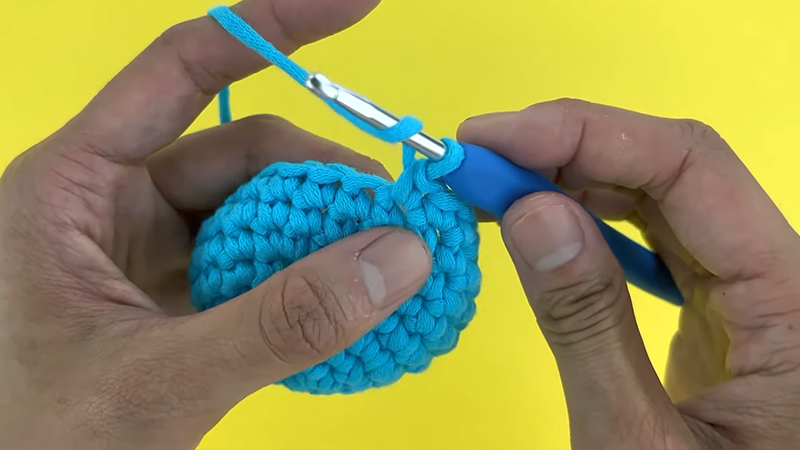
How To Double Crochet Stitch? 7 Steps
Learning the double crochet stitch is a fundamental step in crochet that opens the door to creating beautiful and versatile projects. Follow this step-by-step guideline to master the double crochet stitch:
Step 1: Start with a Foundation Chain
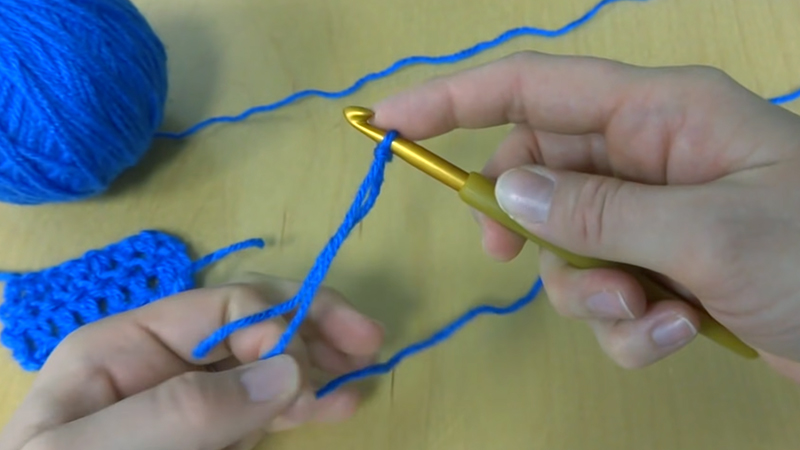
Begin by creating a foundation chain with the desired number of chains for your project. Remember that the number of chains should be a multiple of three plus two additional chains for the turning chain. For practice, let’s start with 15 chains.
Step 2: Yarn Over (YO)
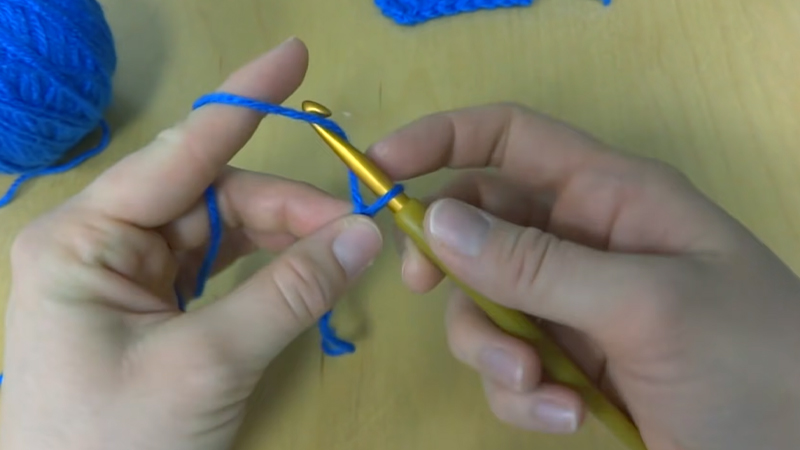
To begin the double crochet stitch, yarn over (YO) by wrapping the yarn from back to front over your crochet hook. Your hook should now have a loop of yarn.
Step 3: Insert the Hook
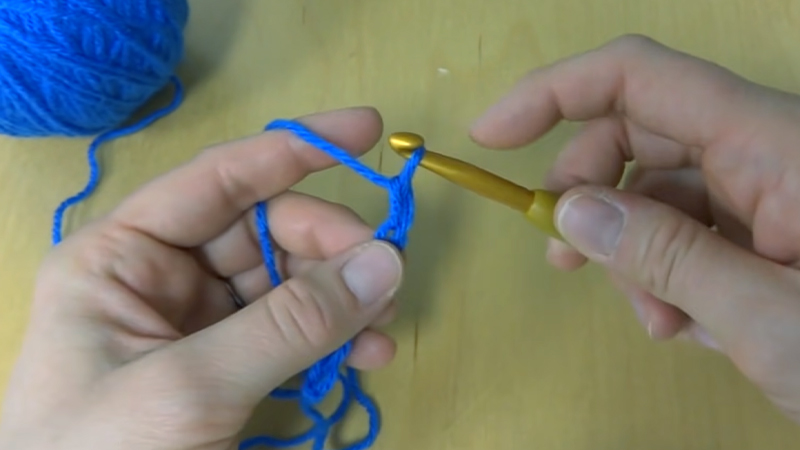
Insert your crochet hook into the third chain from the hook. It’s essential to note that the first three chains from your hook count as a turning chain for the double crochet.
Step 4: Yarn Over and Pull Up a Loop
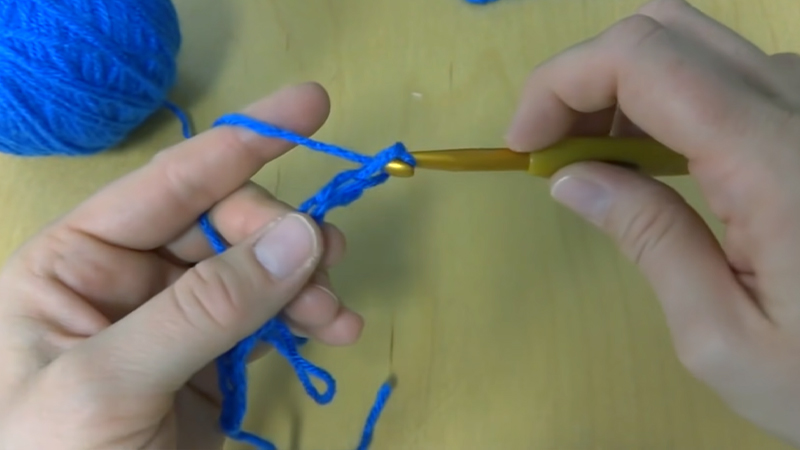
YO again and pull the yarn through the chain you inserted your hook into. You should now have three loops on your crochet hook.
Step 5: Yarn Over and Pull Through Two Loops
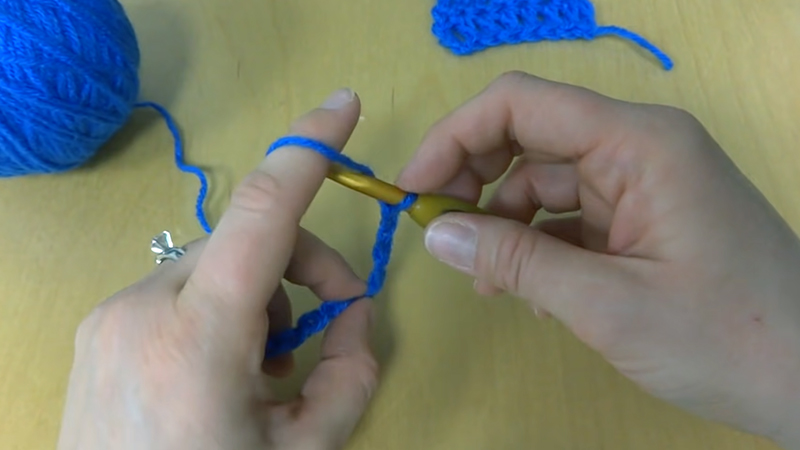
YO once more and pull it through the first two loops on your hook, leaving two loops remaining.
Step 6: Yarn Over and Pull Through Remaining Loops
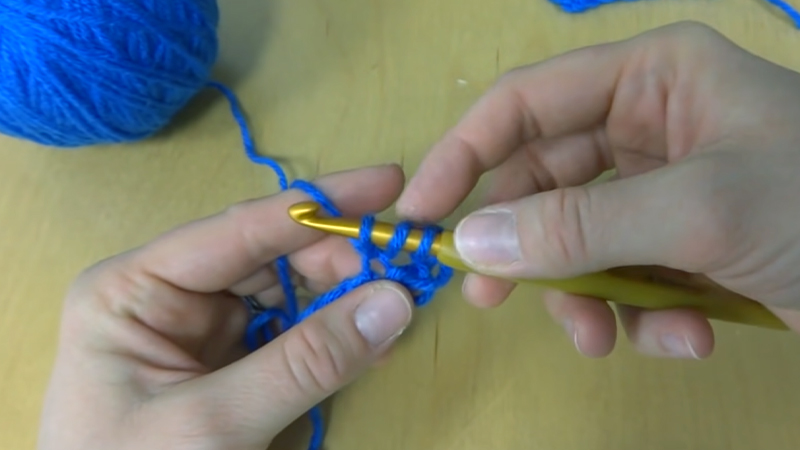
Finally, YO again and pull it through the remaining two loops on your hook. You’ve successfully completed one double crochet stitch.
Step 7: Repeat
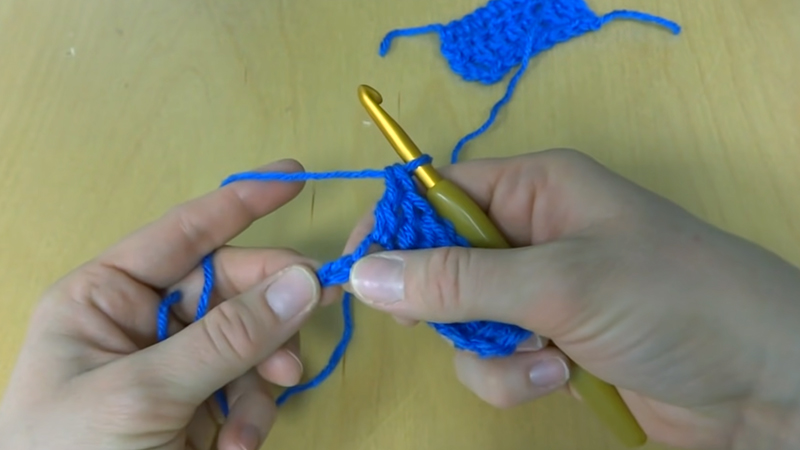
To continue your row of double crochet stitches, YO, insert your hook into the next chain or stitch; YO, pull up a loop; YO, pull through two loops; and YO, pull through the remaining two loops. Repeat this process for each stitch across the row.
With practice, you’ll become proficient in the double crochet stitch, allowing you to create a wide range of crochet projects, from blankets and scarves to intricate garments and decorative items.
When To Use Double Crochet?
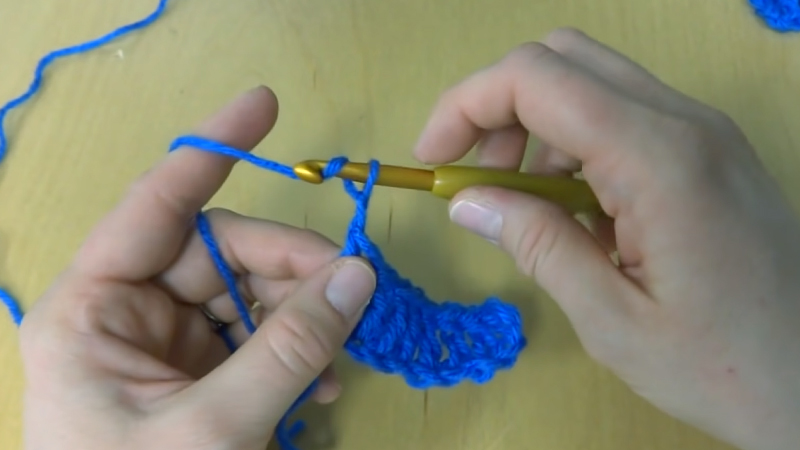
Knowing when to use the double crochet stitch in crochet projects is essential for achieving the desired texture, drape, and appearance. Here are some situations where using the double crochet stitch is particularly useful:
Lightweight Garments
Double crochet is ideal for crafting lightweight and breathable garments like summer tops, cardigans, or vests. The taller stitch creates a more open and airy fabric, making it comfortable to wear in warm weather.
Blankets and Afghans
Double crochet is a popular choice for creating cozy and warm blankets for Afghans. Its height results in a fabric that’s not too dense, providing both insulation and a comfortable weight for snuggling.
Lace Patterns
When designing intricate lace patterns or adding decorative elements to your projects, double crochet stitches are commonly used. They create an elegant, lacy appearance, perfect for shawls, doilies, or delicate accessories.
Textured Patterns
The double crochet stitch is excellent for adding texture to your projects. You can create raised stitches, such as post stitches or popcorn stitches, to give your work depth and visual interest.
Ripple and Wave Patterns
Double crochet is often featured in ripple or wave patterns, where it is used to create peaks and valleys that mimic the motion of water or create a zigzag effect in blankets or scarves.
Tall Stitch Patterns
In combination with taller stitches like treble crochet or double treble crochet, the double crochet stitch is used to create intricate patterns with varying heights. This allows for intricate designs in projects such as granny squares or intricate doilies.
Edging and Borders
Double crochet stitches are frequently used to create decorative edging or borders on crochet pieces. They provide a clean and polished finish to your work and can be used to add a pop of color or texture.
By understanding when to use the double crochet stitch, you can enhance the versatility of your crochet projects and tailor your stitch selection to suit your creative vision, whether you’re aiming for light and airy summer wear, cozy blankets, delicate lace, or textured patterns.
What Are Some Variations Of Double Crochet?
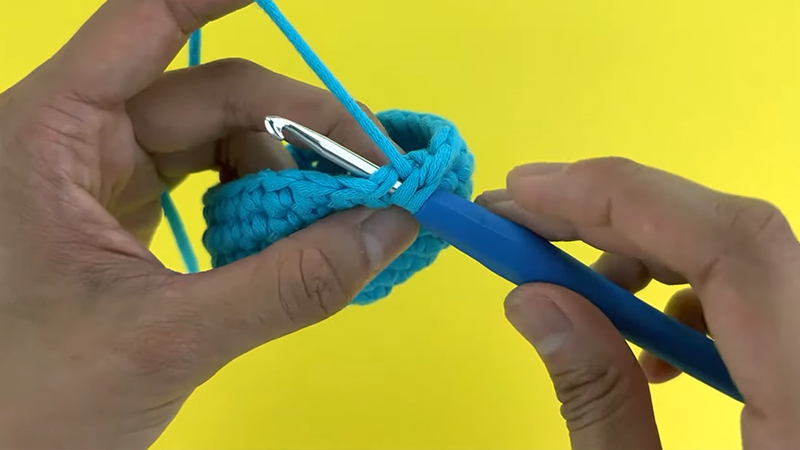
Variations on the double crochet stitch can add unique texture and design elements to your crochet projects. Here are the different double crochet variations:
Front Post Double Crochet (FPDC)
In the front post double crochet, instead of working into the top loops of the stitch, you insert your hook from the front to the back around the post (vertical part) of the previous row’s double crochet.
This creates a raised, ribbed texture on the front side of your work and is often used in cable or texture patterns.
Back Post Double Crochet (BPDC)
Similar to the FPDC, the back post double crochet is worked around the post of the previous row’s double crochet, but from the back to the front. This technique creates a textured pattern on the back side of your work and is commonly used for ribbing and texture in crochet projects.
Cluster Stitch (DC Cluster)
A double crochet cluster is formed by working multiple double crochets into the same stitch or space. After completing the first partial double crochet, you leave the last loops on the hook and repeat the process before pulling the yarn through all the loops.
This creates a cluster of double crochets, adding volume and texture to your project.
Puff Stitch (Puff DC)
The puff stitch involves working multiple unfinished double crochets (typically three or more) into the same stitch or space.
After creating these partial double crochets, you yarn over and pull through all the loops on your hook. This stitch creates a dense, “puffed” texture and is often used for decorative elements.
Crossed Double Crochet (Cross DC)
In the crossed double crochet stitch, you skip one or more stitches and work your double crochet into a subsequent stitch.
Then, you go back and work a double crochet into the skipped stitch, crossing the two double crochets over each other. This technique creates a textured, crisscross effect.
Long Double Crochet (Long DC)
The long double crochet is a variation where you work the double crochet stitch into a stitch several rows below the current row, essentially creating a long vertical stitch. This stitch is often used to create unique textures and patterns in crochet designs.
Bobbled Double Crochet (Bobble DC)
A bobble stitch is created by working several double crochets (usually three to five) into the same stitch or space, leaving the last loop of each stitch on the hook.
After completing all the partial double crochets, you yarn over and pull through all the loops to create a bobble. This stitch adds a three-dimensional, bumpy texture to your work.
These variations on the double crochet stitch allow you to experiment with texture, depth, and design in your crochet projects, offering countless possibilities to make your creations truly unique and eye-catching.
Common Mistakes To Avoid When Doing Double Crochet Stitch
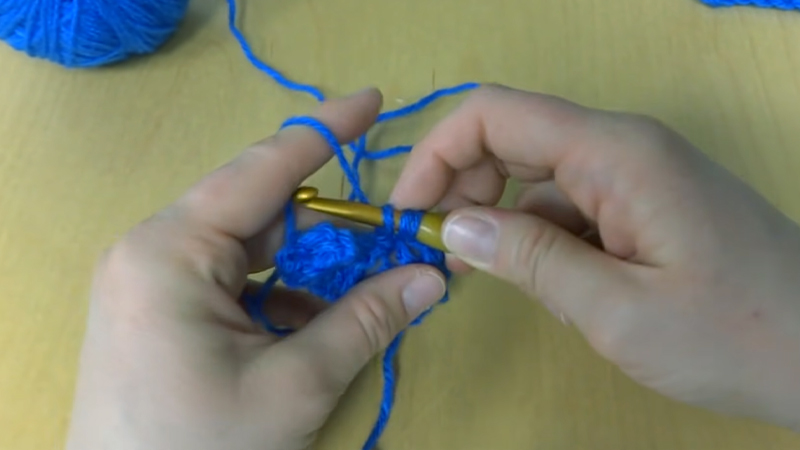
Avoiding common mistakes is crucial when working on the double crochet stitch to ensure your crochet project turns out as intended. Here are some mistakes to watch out for:
Tension Issues
One common mistake is inconsistent tension, which can lead to uneven stitches. Ensure that you maintain a consistent yarn tension throughout your work.
Tension that is too tight can make it difficult to insert your hook, while loose tension can result in overly large and sloppy stitches.
Missing the Turning Chain
When starting a new row of double crochets, it’s essential not to forget the turning chain. The turning chain acts as the first stitch of the row. Neglecting it can lead to a skewed stitch count and uneven edges in your work.
Working into the Wrong Stitch
Double crochet stitches must be inserted into the correct part of the stitch or space. Inserting your hook into the wrong loop or space can cause your stitches to be misaligned and result in an uneven and messy appearance.
Incorrect Yarn Over (YO)
The yarn over (YO) is a fundamental part of the double crochet stitch. Failing to yarn over before inserting your hook into the stitch can lead to incomplete stitches and gaps in your work. Ensure that you consistently yarn over before and after inserting your hook.
Forgetting to Count Stitches
Losing track of your stitch count can lead to irregular patterns and uneven edges in your project. Keep track of the number of double crochets in each row to maintain the desired shape and pattern consistency.
Inconsistent Height
Double crochet stitches should have a consistent height throughout your project. Be mindful of your hook placement and tension to avoid accidentally creating taller or shorter stitches, which can disrupt the overall appearance of your work.
Skipping Stitches Unintentionally
Skipping stitches when it’s not part of the pattern can result in gaps and uneven edges. Double-check that you are working into each stitch or space as required in your pattern, especially at the beginning and end of rows.
By being aware of these common mistakes and practicing your double crochet technique, you can improve the quality and consistency of your crochet projects.
Remember that even experienced crocheters occasionally make mistakes, so patience and practice are key to mastering this versatile stitch.
FAQs
What is the double crochet stitch in crochet?
The double crochet stitch, often abbreviated as DC, is a fundamental crochet stitch that creates a taller and more open stitch compared to a single crochet. It is widely used in various crochet projects to add height, texture, and an airy feel to the fabric.
How do I make a double crochet stitch?
To create a double crochet, follow these steps: yarn over (YO), insert your hook into the stitch or space, yarn over again, pull up a loop (you’ll have three loops on your hook), yarn over once more, and then pull through two loops, followed by another yarn over and pulling through the remaining two loops.
What projects can I use the double crochet stitch for?
You can use the double crochet stitch for a wide range of projects, including blankets, scarves, hats, sweaters, shawls, and decorative items. It’s a versatile stitch suitable for both functional and decorative pieces.
Are there variations of the double crochet stitch?
Yes, there are variations, such as front post double crochet (FPDC) and back post double crochet (BPDC), that create textured patterns. Cluster and puff stitches are variations that add volume and texture, while crossed double crochet creates a crisscross effect.
How can I avoid common mistakes when working the double crochet stitch?
Common mistakes include inconsistent tension, missing the turning chain, working into the wrong stitch, incorrect yarn overs, losing track of stitch count, creating inconsistent heights, and skipping stitches.
Conclusion
Congratulations! You’ve unlocked the magic of the double crochet stitch, a versatile and foundational element in the world of crochet. From crafting cozy blankets to fashioning intricate lace, the double crochet stitch offers endless possibilities for creative expression.
As you’ve learned, mastering the double crochet involves understanding the yarn over, hook placement, and stitch structure. With practice, patience, and attention to detail, you’ll find yourself seamlessly creating textured fabric and adding dimension to your projects.
The double crochet is not just a stitch; it’s a gateway to a world of creativity and personalization. As you continue your crochet journey, remember that every project you undertake will be a canvas for your unique style and imagination, and the double crochet will be there to bring your ideas to life, one stitch at a time.
Leave a Reply